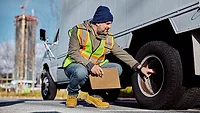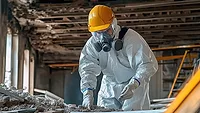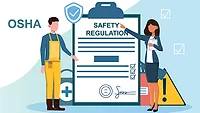Basic Vehicle Safety for Restoration Companies
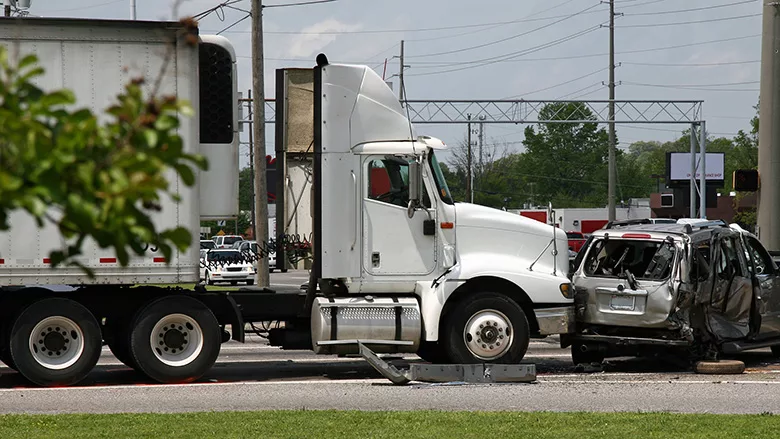
Photo credit: PeteMuller / iStock / Getty Images Plus via Getty Images
This is the first of two articles covering driving safety and fleet vehicles for Restoration Companies. In this article I will cover basic driver safety, driver training, and vehicle maintenance. Consider this article the foundation of your driving and vehicle safety program. I will build onto that foundation with a second article covering the technical and often confusing topic of fleet safety and compliance. As always, I will provide the key information you need, try not to bury you in details, and provide plenty of resources and references. Let’s get started!
Understanding Risk
For a restoration technician, there are certainly a few tasks or activities that we all recognize as having relatively high risk. A few that come to mind are working at heights, operating a lift, or working in a hazardous breathing atmosphere (e.g. mold, COVID-19, asbestos). But I believe there is one risky task that is commonly overlooked. I believe that the most dangerous task any employee performs during an average work day is driving a vehicle. That includes to and from jobs, as well as to and from work!
Read more about vehicle safety for restoration contractors in part II of this series!
If you think about it, what other task has the potential for serious injury while safely sitting at a traffic light and then you are suddenly struck by another vehicle? Granted, sometimes at jobsites others don’t pay attention to what they are doing and injure co-workers or subcontractors. However, from a routine risk and potential for severe injury perspective, I think driving ranks at the top.
Building Driver Awareness
Now that we recognize the risk, one of the basic fundamentals to reducing it is to build awareness. One funny (not funny) aspect of driving is that we are lulled into the repetitiveness of daily driving and with that can come complacency. We’ve all heard it before – do something for a long enough time and you become complacent.
However, every so often we are snapped out of driving complacency. We hear about a friend or person we know who was in a bad car accident and is in the hospital. We have a family member whose vehicle is struck by another driver and they are struggling to get it repaired. Or somebody tells us about their auto insurance doubling after an accident. All of those situations happen daily throughout the country, so why aren’t we building awareness and fighting complacency?
I suggest building awareness by first talking about it. Bring up to co-workers and staff some of the recent accidents and dangerous situations. Tell technicians about recent dangerous driving you have witnessed, such as rapid lane changing or even road rage. Shape these conversations into learning and coaching opportunities. Make sure drivers are aware that driving is an “active” task that requires presence of mind and a need to resist complacency.
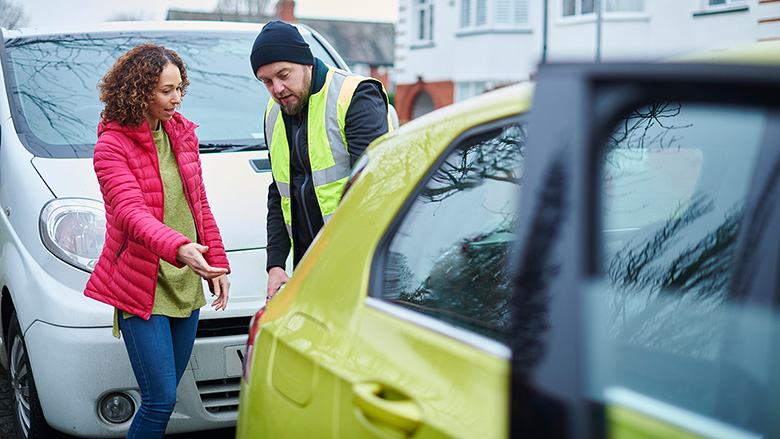
Photo credit: sturti / E+ via Getty Imaages
Talk about Safe Driving and Company Image
While we’re on the subject of awareness, let’s bring up the topic of the visibility and image of your company’s vehicles and how they are operated. Let’s agree that any truck, van, or car with your company logo is a billboard for the business. With that in mind, what is the general public seeing when your vehicles are driving down the road? Do they get a good impression of a clean vehicle operating safely and respectfully? Or do they see a dirty vehicle switching lanes rapidly, speeding, and not being respectful of other vehicles and drivers?
Include this topic in the above-mentioned awareness discussions. Increase every driver’s awareness of company image. In fact, let’s take this a step further and build the vehicle image into company culture!
Driver Training
I’d be remiss if I didn’t cover driver training as a part of awareness. Specifically, defensive driving and distracted driving. These two topics can help every driver improve their skills and awareness. I was offered an in-person driver safety training course a few years back, but was reluctant to take it. (Dare I say, complacency?) I finally gave in and took the course; boy, were my eyes opened! I expected the usual safe driving topics of following distance, braking distance, etc. Instead, I was given instruction of how to actively see and correct for situations before they happened! I still remember those techniques to this day.
So where do we start for basic defensive driving and prevention of distracted driving training? There are many different providers and many different training formats; start with one that is easy and works for your company. Online sources can be easily found, but I would encourage using a basic, simple outline and presenting it in-person to employees. Another resource may be your insurance provider; check with them to see if they have training that you can pass on to your drivers.
I think the value added and chance to improve company culture are worth the extra effort of an in-person presentation. See the Resources Section at the end of this article for training materials you can use.
Understand Vehicle Maintenance Needs
A very commonly overlooked topic is vehicle maintenance. Unfortunately, I have seen Restoration Company vehicles with bald tires, worn out brakes that are screeching, cracked windshields that can obstruct vision, and other conditions that make you wonder how they haven’t caused a wreck. Unfortunately, not all Restoration Company owners or leaders pay attention to these details or set expectations for vehicle maintenance.
I challenge Restoration Companies to change this and turn maintenance it into a company culture expectation, just like the previous topic of safe vehicle operation. Make your vehicle’s operation, maintenance, and appearance a source of pride that reflects how the company operates.
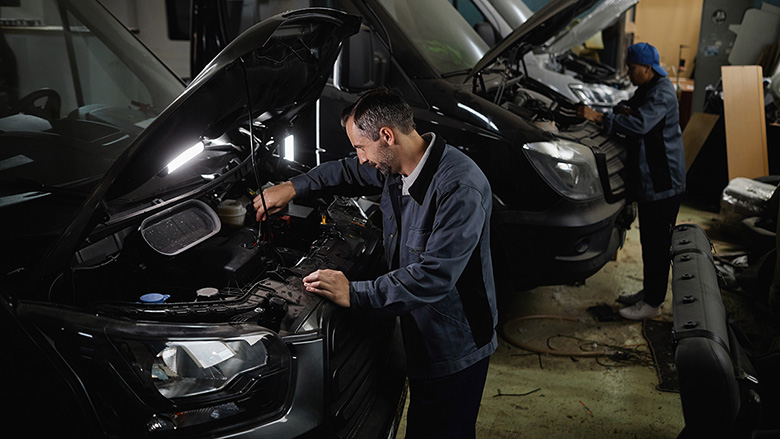
Photo credit: SeventyFour / iStock / Getty Images Plus via Getty Imaages
I suggest following the basic needs of owning any vehicle:
- Keep vehicles clean. Purchase memberships to car washes and set expectations for the appearance. Trucks and vans will get dirty at times, but make it a priority to keep them clean.
- Establish a maintenance program. Whether you use a local garage or a large dealership, setup routines for basic maintenance items like oil and filter changes, tire rotation, and brake inspections. Follow the manufacturer’s manual for recommended maintenance intervals.
- Have a spare/backup vehicle plan. All vehicles need a little time set aside for maintenance. At a worst case, a vehicle may be out of your fleet for weeks or a month after an accident. Have a plan in place in the event this happens. Sometimes that may be a rental vehicle, other times that may be a spare truck or van that is kept at the shop for these occasions.
Perform Vehicle Inspections
Finally, as a part of awareness and vehicle maintenance, establish a vehicle inspection routine. OSHA actually has a section on vehicle safety and inspections; it establishes the need for basic features that you would expect to be required (e.g. horns, headlights, windshields, etc.) and also requires vehicles to be checked at the beginning of each shift. (1) This is a good starting point – have every driver perform a brief vehicle walk-around each morning.
Beyond these basics, performing routine written inspections is helpful because it documents any issues and tends to add more emphasis to getting those issues corrected. You can assign one person to perform a weekly inspection of all vehicles (recorded on paper or electronically) before they leave for jobs or after they are back. Alternatively, you can require each driver to perform a weekly inspection. See the Resources Section at the end of this article to find vehicle inspection forms. Company owners or leaders can emphasize the importance of this by reviewing the inspections and assuring issues are corrected.

Photo credit: coffeekai/ iStock / Getty Images Plus via Getty Images
Summary
As you can see, these topics are all easily implemented and provide a foundation to increase driver awareness and vehicle maintenance. None of them are rocket science or complex. In fact, I’d be willing to bet drivers are already aware of these topics through previous jobs or driver training. Likewise, some Restoration Companies may have some of these topics already in place. Do your company and drivers a favor and begin to introduce these basic driving safety topics. I believe you will see improvements over time. Thanks for reading the article and we’ll dive a little deeper next month!
Resources
- Driver Training – check with your auto insurance provider for free training materials or videos. One free example from Nationwide Insurance can be found here: https://www.nationwide.com/lc/resources/auto-insurance/articles/driving-safety-tips
There are many fee-based driver training courses available; I have used these with success: ClickSafety and the National Safety Council. - Liberty Mutual Insurance, Does your business have a distracted driving policy?https://business.libertymutual.com/insights/business-distracted-driving-policy/
- Liberty Mutual Insurance, Four tips for implementing a distracted driving policy.
- Liberty Mutual Insurance, Safe driving tips.
- GEICO, 5 Tips For Defensive Driving.
- Inspection Checklists – check your State DOT website; here is an example from West Virginia: https://fleet.wv.gov/AFC_Resources/Documents/DOA-FM-018%20Fleet%20Vehicle%20Inspection%20Checklist%202018.pdf
References
- Occupational Safety and Health Administration, 1926.601. https://www.osha.gov/laws-regs/regulations/standardnumber/1926/1926.601#1926.601(b)(14)
Looking for a reprint of this article?
From high-res PDFs to custom plaques, order your copy today!




